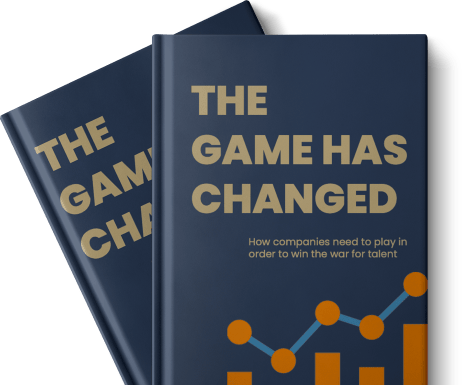14 Reasons Why Site Speed Is Important
- Site Speed, Website Accessibility

Nobody likes to wait, whether for an appointment, a plane, or a delivery; the same is especially true when it comes to shopping. Imagine you visit a store to buy new shoes, and wait ten minutes for an employee to come back with a pair in your size, only to then stand in line forever, just to pay! It would be frustrating, right? Would you visit the same shoe store again after this experience? The alternatives have dramatically increased for every shopper.
With the shift from brick-and-mortar to eCommerce as the place where most people shop, merchants have to meet customer expectations on speed and service, including appropriate page load times for online customers.
Why is this factor particularly critical? Here is a list containing 14 key ways companies (and especially merchants) benefit from fast website speed:
1. Better User Experience
User experience (UX) is heavily impacted by site speed. The longer a page takes to appear, the more users will leave your website dissatisfied, without taking any desired actions. This is especially true if the user experience is continuously disrupted by loading bars or a white screen when visiting pages.
Perceived functionality is another user experience aspect impacted by site speed. What does that mean, exactly?We have all probably been in a situation where we clicked a button and nothing happened. While waiting, you ask yourself: “Does this even work? Has the website registered my click?.”
Users tend to click again and again only to then realize that the website takes several seconds to execute the command. This leads to annoyance very quickly and is often the reason users leave the site, especially if this recurs.
Although UX consists of several factors such as visual appearance, usability, and accessibility, ALL are affected by site speed. Even best-in-class designs cannot serve companies effectively if they are hampered by sluggish page load times.

2. Meeting Customer Expectations
Customers have developed expectations for a certain level of sophistication and style from the brands they like and buy from online. This includes high-speed performance while a site retains its aesthetics, features, and stabilized images. Forrester Research found that 47% of users expect websites to load in less than 2 seconds.
With large brands like Amazon or Apple continuing to provide users with a superior experience, the market standard for other websites and merchants increases. To meet these ever-changing demands, it’s critical for companies to guarantee high-speed performance without having to compromise on modern features and functionality.
3. Gain and Sustain Competitive Advantage
Better serving customers has become a race for businesses. Especially in eCommerce, website speed is one of the most critical factors to keep pace with other merchants and sustain your customer base. A recent LoadStorm study states that 64% of shoppers with a bad site experience will shop somewhere else the next time, resulting in lost revenue for you and earnings for competitors instead (which can then be reinvested to make the site even more performant).
Better serving customers has become a race for businesses. Especially in eCommerce, website speed is one of the most critical factors to keep pace with other merchants, to gain and sustain your customer base. It is likely that shoppers with a bad site experience will shop somewhere else the next time, resulting in lost revenue for you and adding earnings directly to competitors (which can then be reinvested to make the site even more performant).
For many of our eCommerce clients, this has proven to be an opportunity rather than a challenge. We helped them take advantage, engaging users who have left competitor sites dissatisfied, and converting them into customers.
y like and buy from online. This includes high-speed performance while a site retains its aesthetics, features, and stabilized images. Forrester Research found that 47% of users expect websites to load in less than 2 seconds.
4. Value Your Customers’ Time
In addition to exceeding their expectations, you should strive for a quick site speed to value your consumers’ time. Would it make you feel appreciated if someone missed your appointment or kept you waiting for an important response? The same applies to website visitors.
If you can quickly provide the product, service, or information they need users will appreciate your brand, and their next buying decision will more likely be in your favor.
5. Gain Long-Term Growth
Slow website speed also affects a company in the long term, as it impedes organic growth. Customers often stop recommending a service or an online store after a negative experience, which leads to a material decrease in referral business. Even worse, people are more likely to share bad site experiences than good ones, leading to users being biased and discouraged before they even have had firsthand contact with a website.
Moreover, high-authority websites are less likely to link to your content as they don’t want to disturb their users by directing them to another site with a bad experience. We have even seen newsletter unsubscribe rates rising, largely as a result of poor site performance.
Lastly, people typically attribute insufficient website speed to a lack of credibility, which may hurt brands severely, especially in eCommerce as companies have to handle personal data and payment information. This is why it should be a top priority for merchants to offer a superior UX and site speed in order to build a sense of security and confidence.
6. Better Mobile Experience
The number of mobile users continues to grow each year. Statistics by Statista and CNBC show an increase of roughly 50% in the last five years (2017-2022).

By 2026, it is expected that there will be 7.516 billion mobile device users, up from 6.378 billion today; with an increasing proportion of users who exclusively use smartphones to access the web. As a result, companies shift their focus to a true mobile strategy.
According to Google, sluggish website speed has a heavy impact on mobile customers. When encountering a poor mobile experience, a majority of users are less likely to make a future purchase as they have developed expectations through high-performing desktop websites. They are not willing to sacrifice a fast experience for features and functionality, and they demand both. What does user expectation for mobile speed look like, exactly?
Google states that 30% of consumers expect a two-second or less page load, while 18% desire a page to load instantly.
However, Google’s benchmarking study shows that a majority of businesses are failing to meet these demands (only four percent were able to consistently achieve a page speed of two seconds or less).
Google’s data shows that mobile speed is vital to deliver a quick and hassle-free mobile experience, which is key to driving business success these days. With the shift in browsing and online shopping behavior patterns towards mobile-first (or even mobile-only), merchants and other companies have a chance to serve their customers better, drive engagement along with revenue, and outperform competitors.
7. A Good “First Impression”
The average user’s attention span has substantially reduced over the years to now just eight seconds or less. Therefore, businesses only have a very small window to leave a favorable impression on visitors (and potential customers).
Consumers, readers, and website visitors form immediate judgments about a company and its site. Blazing website speed is perceived as professional, trustworthy, and reputable, whereas poorly performing websites have the exact opposite effect on users. This causes website owners to lose out on traffic and revenue… And typically there is no second chance to make a better impression as most users are unwilling to go back to a site if they had a bad first impression.
8. Decreased Bounce Rates
Bounce Rate (the percentage of visitors that leave a site after viewing just one page) goes hand in hand with the results of a good first impression. A high bounce rate indicates that either visitors do not find what they are looking for, or that the site does not provide a good experience. According to Google, 53% of traffic bounces when a site takes longer than three seconds to load. A practical example comes from BBC, who found that they lost 10% of their total number of users for every extra second it took their websites to load.
9. Improved Page Depth
Providing users with a fast-loading experience not only lowers immediate bounces but also encourages them to explore the website further. This refers to page depth, another KPI organizations should be aware of when assessing the advantages of a high-performance website. Page depth is the average number of pages visited during a session, and allows businesses to get a better sense of how engaged visitors actually are. A recent HubSpot study of over 600 million online shopping sessions found that for every second of improvement in site speed, page depth increased by an average of 11%.
10. Increased Conversion Rates
Websites that load (almost) immediately drive user engagement and increase conversion rates (and revenue, in the case of eCommerce). Another study by HubSpot indicates that conversion rates are most affected by page load times within the first five seconds. Within this time frame, conversion rates decrease by an average of 4.42% percent for every additional second. The results show that pages with load times between 0-2 seconds achieve the highest conversion rates.
Amazon discovered that if their site slowed down by just one fraction of a second, they would lose $1.6 billion annually; and competing eCommerce merchants anticipate even more severe consequences comparatively. Amazon is an established, and recognized company, making it more likely that people are willing to wait for a page to load than they would for another online store.
Conversion rates – whether it’s filling out a contact form, requesting a quote, or making a purchase – are one of the most critical reasons for businesses to aim for higher performance on their website.
11. Minimize Shopping Cart Abandonments
Shopping cart abandonment (customers add one or more items to their online store basket but never make a purchase) is another factor that shows how critical site speed is for websites. Studies indicate that the average cart abandonment rate is between 70% and 88%, with slow loading times as one of the main reasons.
We have proven the value of an optimized shopping cart and checkout process to many of our clients. Along with features such as one-step checkouts and autofill form fields, increasing website speed ensures a superior site experience from start to finish, reducing shopping cart abandonment and increasing revenue.

12. Higher Google Rankings
Google takes site speed into account when ranking websites. In recent years, the search engine also started to put a higher emphasis on mobile speed (which refers back to reason #6 in this blog article).
Google’s evaluation of site speed, usability, and accessibility strongly impacts a company’s SEO ranking. By maximizing website performance, businesses achieve higher positions on search engine results pages (SERPs), leading to more traffic (for which they won’t have to pay) and increased ROI.
Additionally, Google will send fewer page crawlers to your site if the server takes longer than two seconds to respond, resulting in delays in indexing your most recent blog entry and other updates which can be harmful to your brand and website.

13. Impact On Other Marketing Activities
Next to SEO, SEA (Search Engine Advertising) is also affected, as site speed is calculated along with the quality factor of an ad. If a search engine ad promotes a site with a high bounce rate and little engagement, it is likely that companies have to pay higher click prices than their competitors. The same goes for social media campaigns, where site speed has an important impact on the cost-per-click rate, as well.
Further, website performance affects the success of Email marketing. How would you feel if you receive an email from a business and you are unable to open their site for five seconds? We’ve already established that a poor loading time is perceived as unprofessional and less trustworthy. Would it really be worth your time to interact with the company and its offer? Regardless of how great your product or service is, when your prospects have a poor first impression, it will be far more difficult to win them over.
14. Capitalize On Your Efforts
Besides marketing expenditures, companies also have additional investments. Imagine a new product launch: The initial idea needs to go through development cycles, requiring manpower, time, and other resources. These efforts should be worthwhile.
How frustrating would it be to miss out on higher conversion rates for your new-released product because of insufficient website speed? Low Google rankings for your articles and pages negatively affect every other marketing and sales investment, in addition to poor user experiences that cannot keep up.
We demonstrated to many customers how much a faster site speed positively impacts their business growth, revenue, and profitability.
Conversely, we talk to executives who tell us that optimizing site speed is not a priority for them as their website or online store already delivers sufficient results; and if that is the case for you as well, great! We have found that there are tangible missed opportunities where conversion rates aren’t optimized as a priority, leaving market share to your competitors who properly address website performance. We can ensure this doesn’t happen to you!
Whether you have already identified site speed as an issue of your website, looking for methods to achieve higher ROI with your current systems, or simply want to have your website performance evaluated by a trusted expert:
We invite you to review a speed assessment of your site. The link below makes it easy to schedule.
Book your free appointment with a Web Performance Expert
How companies need to play in order to win the war for telent
